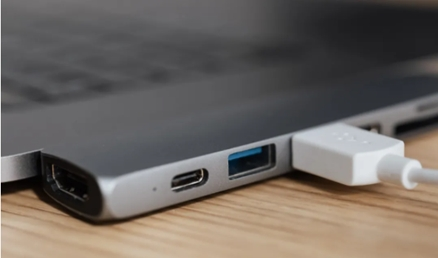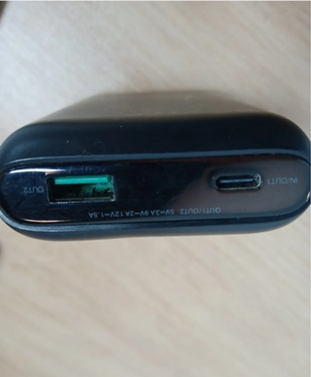- Type-C Widely Used
- Introduction to Type-C
- Advantages of Type-C
- ESD/EOS Protection Solutions
Type-C Widely used
Type-C connectors have gained widespread popularity in recent years due to their versatile design, support for reversible insertion, and lightning-fast data transfer speeds of up to 10 Gbit/s. This connector has become increasingly prevalent in various products and has been embraced by major PC and motherboard manufacturers.

According to market research firm ABI Research, last year, over 50% of smartphones and 93% of laptops were equipped with the latest USB Type-C connector.

Observing the electronic devices we commonly use, such as laptops, smartphones, and power banks, it’s evident that Type-C connectors are ubiquitous, highly versatile, and offer exceptional expandability.

Type-C connector Introduction
The Type-C connector, officially known as the USB Type-C connector, is a USB form factor that represents the latest standard in USB connector design. Compared to Type-A and Type-B connectors, Type-C is much smaller, measuring only one-third the size of other connectors.

It first appeared in 2014 on the Nokia N1 tablet and was subsequently adopted in the 2015 Google Chromebook Pixel laptop. It gained more recognition when it was integrated into Apple’s slim MacBook models and has since been widely applied in various other products.

Advantages of Type-C
Reversible “Plug and Play”: Type-C supports reversible insertion from both sides, eliminating the frustration of trying to plug it in the right way. You’ll hear a satisfying “click” when the connector is inserted.

Maximum Data Transfer Speeds of 10 Gbit/s: Type-C allows for blazing-fast data transfer rates. It can be used to transfer files quickly between devices like USB drives and external hard drives and can even transmit 4K UHD video signals using DisplayPort.
Power Delivery of up to 100W: Many smartphone manufacturers advertise fast charging capabilities, and Type-C’s increased contact points can accommodate higher current, making it suitable for fast charging.

Versatile External Connectivity: A single Type-C port can handle power, USB, and signal connectors, simplifying cable connections. Whether you’re gaming on your phone with a connected mouse and keyboard or enjoying movies on a large display, Type-C offers a seamless experience.

ESD/EOS Protection Solutions
Even with all its advantages, Type-C connectors are susceptible to electrostatic discharge (ESD) risks. Since Type-C connectors are frequently inserted and removed in everyday use, their operational characteristics make them more vulnerable to human body electrostatic discharges.
These connectors contain highly integrated chips, and electrostatic discharges can weaken or even damage component performance. Moreover, due to Type-C’s higher data transfer rates and fast charging capabilities, the demand for electrostatic protection becomes even more critical.
JY – TT0512TB
| Product | Package | VRWM | VBR | VC@Ipp | IR | Cj | Ipp |
| TT0512TB | DFN1006-3L | 5V | 6V | 12.0V@1A | 1uA | 0.25pF | 3.5A |
ESD protection components for Type-C connectors must meet the following requirements:
Higher Ipp (Peak Pulse Current)
Tolerance for IEC 61000-4-2 Contact Mode 8kV ESD Impacts
Compact Packaging Size
To address these electrostatic protection needs in practical circuit environments, JY-electronics has developed an ESD protection solution for Type-C connectors, presented in their product TT0512TB.

